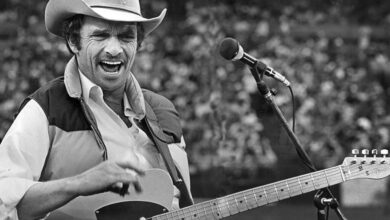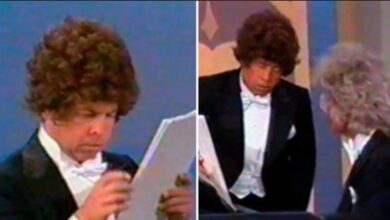This Dance Was Famous In The 1950s, Can You Recall It Today
In February 1958, a dance craze exploded across American high school gyms and sock hops, capturing the vibrant spirit of the era and embodying the carefree energy of rock ‘n’ roll’s early days. This dance was “The Stroll,” a line dance that quickly became synonymous with youthful fun and spontaneity. It originated in African American communities but gained widespread popularity through television, particularly on Dick Clark’s “American Bandstand,” where teenagers nationwide saw and eagerly adopted the dance at local gatherings.
“The Stroll” transcended being just a dance; it became a cultural phenomenon reflecting the social dynamics of the 1950s. The dance involved two lines of participants facing each other, creating an aisle down the middle. Couples would take turns strutting down this aisle in rhythm with the music, adding personal flair to their movements. This format allowed for both group participation and individual expression, resonating deeply with youth who were starting to assert their identities within a rapidly changing society.
Accompanying this dance was the song “The Stroll,” performed by the Canadian vocal group The Diamonds. Known for their smooth harmonies and catchy doo-wop tunes, The Diamonds played a crucial role in bringing “The Stroll” to a broader audience. Their version of “The Stroll” was more than a hit; it became the anthem of a cultural movement, encapsulating the joy and rebellious spirit of the time. The group’s lead singer, Dave Somerville, with his rich baritone voice, became the voice of the dance craze, guiding dancers with his melodic crooning.
The dance’s rapid rise to fame turned it into a staple at social events. Its appeal was widespread, bridging racial and social divides during a time of significant segregation in the United States. The Stroll’s simplicity made it accessible to many, while its inherent coolness made it irresistible. Teenagers flocked to dance floors in their best outfits, eager to take part in the latest trend and exude a confidence that mirrored the optimism of post-war America.
As “The Stroll” surged in popularity, it became emblematic of a generation’s desire to express themselves and enjoy the newfound freedoms of the 1950s. The dance’s presence on television and in music solidified its place in American pop culture, making it a memorable part of the era’s social fabric. The Stroll’s legacy endures as a symbol of a time when music and dance brought people together and defined an era.





